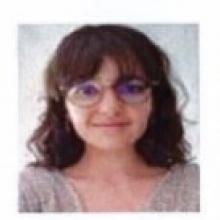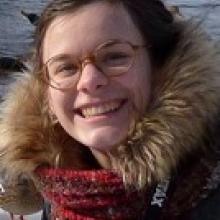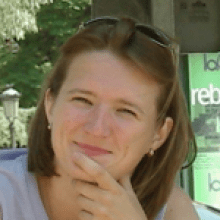Evolutionary Genetics of Interactions Group
Members

Ingénieur d'études CDD
CNRS

Maître de conférences
UCBL
Tel: 04 72 43 29 16

Post-doc
CNRS
Post-doc
CNRS

Chargé de recherche
CNRS
Tel: 33 04 72 43 29 12

Maîtresse de conférence universitaire
UCBL
Tel: 04 72 43 29 16

Professeur des universités
UCBL

Doctorante
CNRS
Tel: 04 72 44 81 42

Doctorant
UCBL
Tel: 04 72 44 81 42

Chargée de recherche
CNRS
Tel: 33 04 72 44 81 01

Doctorante
INSA
Tel: 04 72 44 81 42

Maîtresse de conférences
UCBL
Tel: 04 72 43 29 10

Doctorante
UCBL
Tel: 04 72 44 81 42
Doctorante
UCBL
Doctorante
UCBL
Assistante ingénieure CDD
UCBL

Maître de conférence universitaire
UCBL
Tel: 33 04 72 44 81 01

Directeur de recherche
CNRS
Tel: 33 04 72 43 19 21

Professeure des universités
UCBL
Tel: 33 04 72 44 82 16

Doctorant
UCBL
Tel: 04 72 44 81 42
Professeur des universités
VetAgro-Sup
Tel: 33 04 78 87 27 02
Living systems are made up of a multitude of interlocking levels of organization, involving cooperation and conflict. Cooperation and the selection of systems operating in a coordinated manner has allowed so-called "major" evolutionary transitions, towards new scales of individuality, such as the eukaryotic cell. Nevertheless, natural selection continues to operate at all scales, generating possible evolutionary conflicts between the different components of the individual.
Our research is in line with this perspective, and aims to better understand the nature and evolutionary implications of the interactions between the multiple components of organisms, from genes to symbiotic bacteria, viruses and transposable elements. We also explore the impact of these interactions on the dynamics of genetic information, through horizontal transfer, or on genetic innovation and adaptation, through domestication. Our research, mainly experimental, but also theoretical, is implemented on arthropod models, and is mainly related to genetics and evolutionary genomics.
The team is structured along two main axis:
- Intragenomic interactions: transposable elements (resp. Marie Fablet)
Ex1: The evolutionary dynamics of transposable elements (TEs) in genomes, in relation to their natural variability. Our models include natural populations of Drosophila melanogaster and D. simulans, as well as species of agronomic or societal interest, such as the invasive species D. suzukii or the tiger mosquito Aedes albopictus.
Ex2: Interactions between ET control and anti-viral immunity. We are studying the molecular mechanisms of RNA interference at the origin of the entanglement of these two processes, as well as the co-evolutionary implications, using experimental infections of different viruses on several Drosophila lines.
People involved : CV, MB, MF
- Symbiosis, the driving force of evolution (resp. Natacha Kremer)
Ex1 : Certain symbiotic bacteria provide metabolic capacities that the insect lacks. We are analysing these interactions in haematophagous insects (bedbugs, ticks) and phytophagous insects (the whitefly Bemisia tabaci) using approaches combining phenotype analysis, genetics, physiology and metabolomics.
Ex2: Parasitoid insects have domesticated viral genes enabling them to bypass the immune responses of their hosts. We are studying the frequency and adaptive significance of these events and, more generally, looking into the factors structuring horizontal transfers in host-parasitoid communities.
People involved: NK, LM, LZ, JMD, JV, FV, SC
Publications
Display of 241 to 270 publications on 390 in total
Rickettsia ‘In’ and ‘Out’: Two Different Localization Patterns of a Bacterial Symbiont in the Same Insect Species
PLoS ONE . 6 ( 6 )
Journal article
see the publicationEffect of Wolbachia infection and temperature variations on the fecundity of the Uzifly Exorista sorbillans (Diptera: Tachinidae)
Symbiosis . 54 : 151-158
Journal article
see the publicationEvolvability, epigenetics and transposable elements
Biomolecular concepts . 2 : 333-341
Journal article
see the publicationIsolation and gene flow: inferring the speciation history of European house mice
Molecular Ecology . 20 ( 24 ) : 5248-5264
Journal article
see the publicationVertical and horizontal transmission drive bacterial invasion
Molecular Ecology . 20 ( 17 ) : 3496 - 3498
Journal article
see the publicationBacterial symbionts in insects or the story of communities affecting communities.
Philosophical Transactions of the Royal Society B: Biological Sciences . 366 ( 1569 ) : 1389-400
Journal article
see the publicationIntraspecific specialization of the generalist parasitoid Cotesia sesamiae revealed by polyDNAvirus polymorphism and associated with different Wolbachia infection.
Molecular Ecology . 20 ( 5 ) : 959-71
Journal article
see the publicationEndosymbionts of arthropods and nematodes: allies to fight infectious diseases?
Médecine/Sciences . 27 ( 11 ) : 953-958
Journal article
see the publicationSurvey of Wolbachia and Its Phage WO in the Uzifly texitExorista sorbillans (Diptera: Tachinidae)
Current Microbiology . 63 : 267-272
Journal article
see the publicationIsolation and gene flow: inferring the speciation history of European house mice
Molecular Ecology . 20 : 5248-5264
Journal article
see the publicationVertical inheritance and bursts of transposition have shaped the evolution of the BS non-LTR retrotransposon in Drosophila.
Molecular Genetics and Genomics . 286 ( 1 ) : 57-66
Journal article
see the publicationComparative analysis of transposable elements in the melanogaster subgroup sequenced genomes.
Gene . 473 ( 2 ) : 100-9
Journal article
see the publicationLes Ressources
Actes du Colloque de l'Institut Universitaire de France . : 356 p.
Conference paper
see the publicationMedicago truncatula contains a second gene encoding a plastid located glutamine synthetase exclusively expressed in developing seeds
BMC Plant Biology . 10 ( 183 ) : 16 p.
Journal article
see the publicationInduction by Chlorpyrifos of the Confusion of Males in Discriminating Female Sexual Pheromones Used for Mate Finding by Two Sympatric Trichogramma Species (Hymenoptera: Trichogrammatidae)
Environmental Entomology . 39 ( 2 ) : 535-544
Journal article
see the publicationDecrease in Fecundity Induced by Interspecific Mating Between Two Trichogramma Parasitoid Species
Journal of Economic Entomology . 103 ( 2 ) : 308-313
Journal article
see the publicationDo variable compensatory mechanisms explain the polymorphism of the dependence phenotype in the Asobara tabida-wolbachia association?
Evolution - International Journal of Organic Evolution . 64 ( 10 ) : 2969-79
Journal article
see the publicationGenes devoid of full-length transposable element insertions are involved in development and in the regulation of transcription in human and closely related species.
Journal of Molecular Evolution . 71 ( 3 ) : 180-91
Journal article
see the publicationPrevalence of a virus inducing behavioural manipulation near species range border
Molecular Ecology . 19 ( 14 ) : 2995-3007
Journal article
see the publicationThe transmission efficiency of tomato yellow leaf curl virus by the whitefly Bemisia tabaci is correlated with the presence of a specific symbiotic bacterium species.
Journal of Virology . 84 ( 18 ) : 9310-7
DOI: 10.1128/JVI.00423-10
Journal article
see the publicationEndosymbiont metacommunities, mtDNA diversity and the evolution of the Bemisia tabaci (Hemiptera: Aleyrodidae) species complex.
Molecular Ecology . 19 ( 19 ) : 4365-4378
Journal article
see the publicationÉvolution des interactions entre espèces
Biologie évolutive . : 533-616
Book chapter
see the publicationIntragenomic conflict in populations infected by Parthenogenesis Inducing Wolbachia ends with irreversible loss of sexual reproduction.
BMC Evolutionary Biology . 10 : 229
Journal article
see the publicationJumping genes and epigenetics: Towards new species.
Gene . 454 ( 1-2 ) : 1-7
Journal article
see the publicationEvolution and manipulation of parasitoid eggload
Evolution - International Journal of Organic Evolution . 63 ( 11 ) : 2974-2984
Journal article
see the publicationA new case of Wolbachia dependence in the genus Asobara: evidence for parthenogenesis induction in Asobara japonica
Heredity . 103 ( 3 ) : 248-256
DOI: 10.1038/hdy.2009.63
Journal article
see the publicationMolecular detection and identification of Rickettsia endosymbiont in different biotypes of Bemisia tabaci
Clinical Microbiology and Infection . -- : 1-2
Journal article
see the publicationIdentification of a polymorphic collagen-like protein in the crustacean bacteria Pasteuria ramosa
Research in Microbiology . 160 : 792-799
Journal article
see the publicationGenomic environment influences the dynamics of the tirant LTR retrotransposon in Drosophila
FASEB Journal . 23 : 54-62
Journal article
see the publicationInfra- and Transspecific Clues to Understanding the Dynamics of Transposable Elements
genome dyn stab . -- : 115-123
Journal article
see the publication